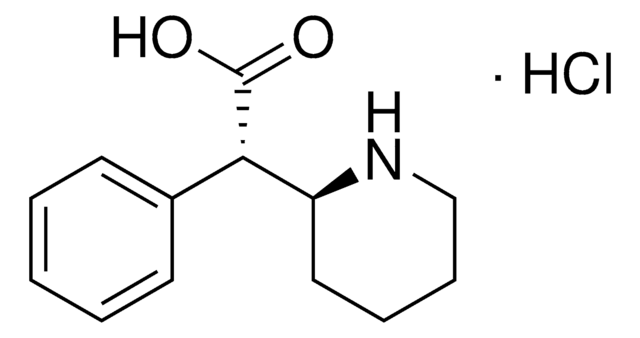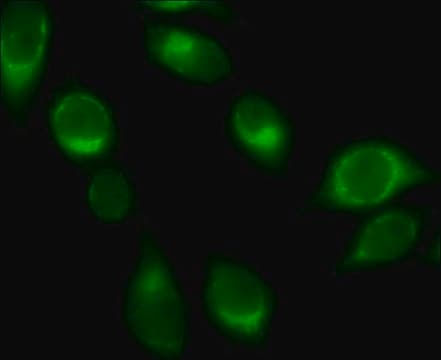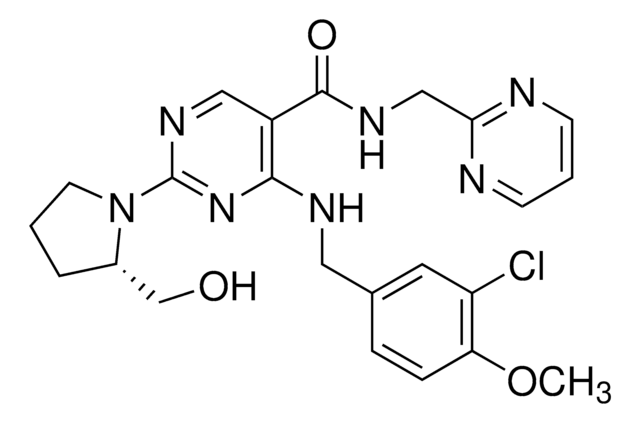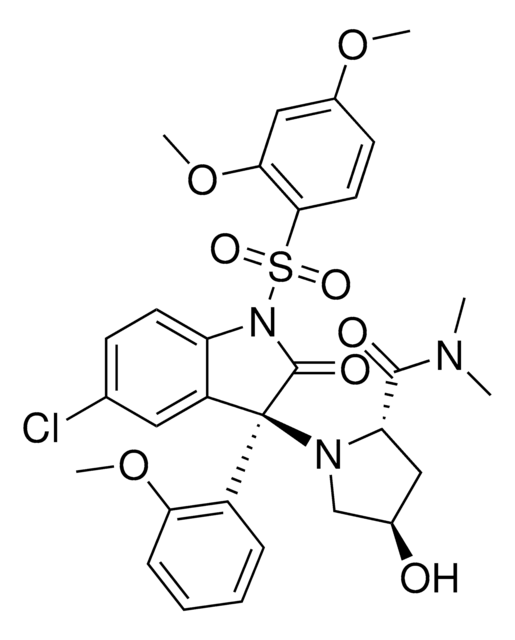T1516
DL-Trihexyphenidyl hydrochloride
solid
About This Item
Produits recommandés
Forme
solid
Couleur
white
Solubilité
methanol: soluble 50 mg/ml, clear to hazy, colorless
H2O: soluble
Chaîne SMILES
Cl[H].OC(CCN1CCCCC1)(C2CCCCC2)c3ccccc3
InChI
1S/C20H31NO.ClH/c22-20(18-10-4-1-5-11-18,19-12-6-2-7-13-19)14-17-21-15-8-3-9-16-21;/h1,4-5,10-11,19,22H,2-3,6-9,12-17H2;1H
Clé InChI
QDWJJTJNXAKQKD-UHFFFAOYSA-N
Informations sur le gène
human ... CHRM1(1128) , CHRM2(1129) , CHRM3(1131) , CHRM4(1132) , CHRM5(1133)
Application
Actions biochimiques/physiologiques
Notes préparatoires
Mention d'avertissement
Warning
Mentions de danger
Conseils de prudence
Classification des risques
Acute Tox. 4 Oral
Code de la classe de stockage
13 - Non Combustible Solids
Classe de danger pour l'eau (WGK)
WGK 3
Point d'éclair (°F)
Not applicable
Point d'éclair (°C)
Not applicable
Équipement de protection individuelle
dust mask type N95 (US), Eyeshields, Gloves
Certificats d'analyse (COA)
Recherchez un Certificats d'analyse (COA) en saisissant le numéro de lot du produit. Les numéros de lot figurent sur l'étiquette du produit après les mots "Lot" ou "Batch".
Déjà en possession de ce produit ?
Retrouvez la documentation relative aux produits que vous avez récemment achetés dans la Bibliothèque de documents.
Notre équipe de scientifiques dispose d'une expérience dans tous les secteurs de la recherche, notamment en sciences de la vie, science des matériaux, synthèse chimique, chromatographie, analyse et dans de nombreux autres domaines..
Contacter notre Service technique








